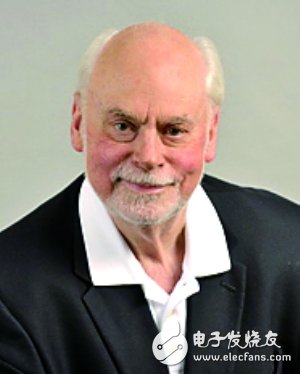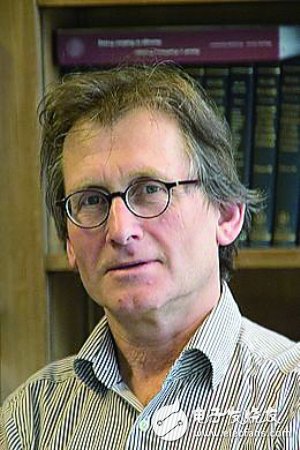The Nobel Prize in Chemistry was awarded in 2016 by Jean-Pierre Sauvage, Sir J. Fraser Stoddart, and Bernard L. Fee Bernard L. Feringa. They made a molecular machine with only a thousandth of the thickness of the hair. They succeeded in linking the molecules together to design all molecular machines including micro-lifts, micro-motors and miniature muscle structures.

Jean Pierre Sovaj was born in Paris, France in 1944. In 1971, he received his Ph.D. from the University of Strasbourg, France. He is currently an honorary retired professor at the University of Strasbourg, France, and an honorary research director at the French National Research Center.

Fraser Stoddart was born in Edinburgh, England in 1942. Received a Ph.D. from the University of Edinburgh in 1966. He is currently a professor of chemistry at Northwestern University.

Bernard Ferringa was born in the Netherlands in 1951. In 1978, he received his Ph.D. from the University of Groningen, the Netherlands. He is currently a professor of organic chemistry at the University of Groningen, the Netherlands.
The Royal Swedish Academy of Sciences announced on the 5th that it will award the 2016 Nobel Prize in Chemistry to three scientists, Jean Pierre Sovad, Fraser Stoddart and Bernard Feringa, in recognition of their Contributions in the field of molecular machine design and synthesis.
What is a molecular machine?The Permanent Secretary of the Royal Swedish Academy of Sciences, Golan Hansson, announced the winners and awards at the Royal Academy of Sciences Conference Hall at 11:45 local time (17:45 Beijing time).
Molecular machines are machines that are designed and developed at the microscopic scale at the molecular level and can be moved to perform specific tasks while providing energy to them. The Nobel Prize Selection Committee said in a statement that the three winners invented "the world's smallest machine" and pushed the development of chemistry to a new dimension.
How did you research it?According to reports, the three winners completed the "three-step" of molecular machine design and synthesis: in the first step, Sovaj successfully synthesized two interlocking cyclic molecules called "soda hydrocarbons", and The two molecules can move relative to each other; in the second step, Stoddart synthesizes "rotaxane", which is to place a ring molecule on a dumbbell-shaped linear molecular axis, and the ring molecule can move up and down around this axis. And successfully realized a "molecular elevator" that can rise to a height of 0.7 nanometers and a "molecular muscle" that can bend gold flakes; in the third step, Feringa designed a molecular motor that can be rotated in a specific direction in construction. This motor can rotate a 28-micron glass cylinder that is 10,000 times larger than the motor itself. With these three steps, the molecular machine can move.
Did you know that the award was made?Felinga said in the on-site telephone connection that the award-winning news made him "shocked" and was honored. He said that honor belongs to all scientific research partners, and everyone's joint efforts have achieved such impressive results. Fei Jialin explained to his award-winning achievements: “Once the movement is controlled at the molecular level, it is possible to control other forms of movement. This research has opened up broad prospects for the development of new materials in the future.â€
This year's Nobel Prize in Chemistry is worth 8 million Swedish kronor (about 933,300 US dollars), which will be divided equally among the three winners.
What can molecular machines do?The selection committee said that, as in the 1930s, when electric motors were invented, scientists never thought that it would be widely used in electric trains, washing machines, electric fans, and so on. Molecular machines, like the electric motors of the year, are likely to be used in the development of new materials, new sensors and energy storage systems in the future.
(1901-2015)
Several data on the Nobel Prize in Chemistry107
Since the establishment of the 1901 award, the Nobel Prize in Chemistry has been awarded 107 times in total. Only 1916, 1917, 1919, 1924, 1933, 1940, 1941 and 1942 were not issued during the period.
63
Of the 107 Nobel Prizes in Chemistry that have been awarded, 63 have been awarded to individuals, 23 to two at the same time, and 21 to three at the same time.
4
A total of four women in history have won the Nobel Prize in Chemistry. Of the four, two were individually won: Mrs. Curie won the award in 1911, and in 1903 she had won the Nobel Prize in Physics; in 1964, the British biochemist Dorothy Mary Huo Qi Jin won the award for promoting the development of protein crystallography.
35
The youngest Nobel Prize in Chemistry to date is the French scientist Frederic Jolio. He was only 35 years old when he won the prize in 1935. It is worth mentioning that Joliot’s wife is Iren Curie, the eldest daughter of Madame Curie. In 1935, the couple were awarded the Nobel Prize in Chemistry for their outstanding contributions to the synthesis of new radioactive elements.
85
American chemist John Finn was 85 years old when he won the Nobel Prize in Chemistry in 2002 and is the most acclaimed winner of the Chemistry Prize.
58
The average age of the Nobel Prize winners is 58 years old.
2
Two German chemists Richard Kuhn and Adolf Butenandt, who won the Nobel Prize in Chemistry, were unable to accept the award because of the oppression of the Hitler government. Afterwards, although they received the Nobel Prize certificate and medal, they were unable to receive the prize.
Fixed Support,Steel Support,Solar Panel Support,Ground Solar Mounting Support
Fuzhou Mei Li Cheng Imp&Exp Co., Ltd , https://www.mlc-solar.com